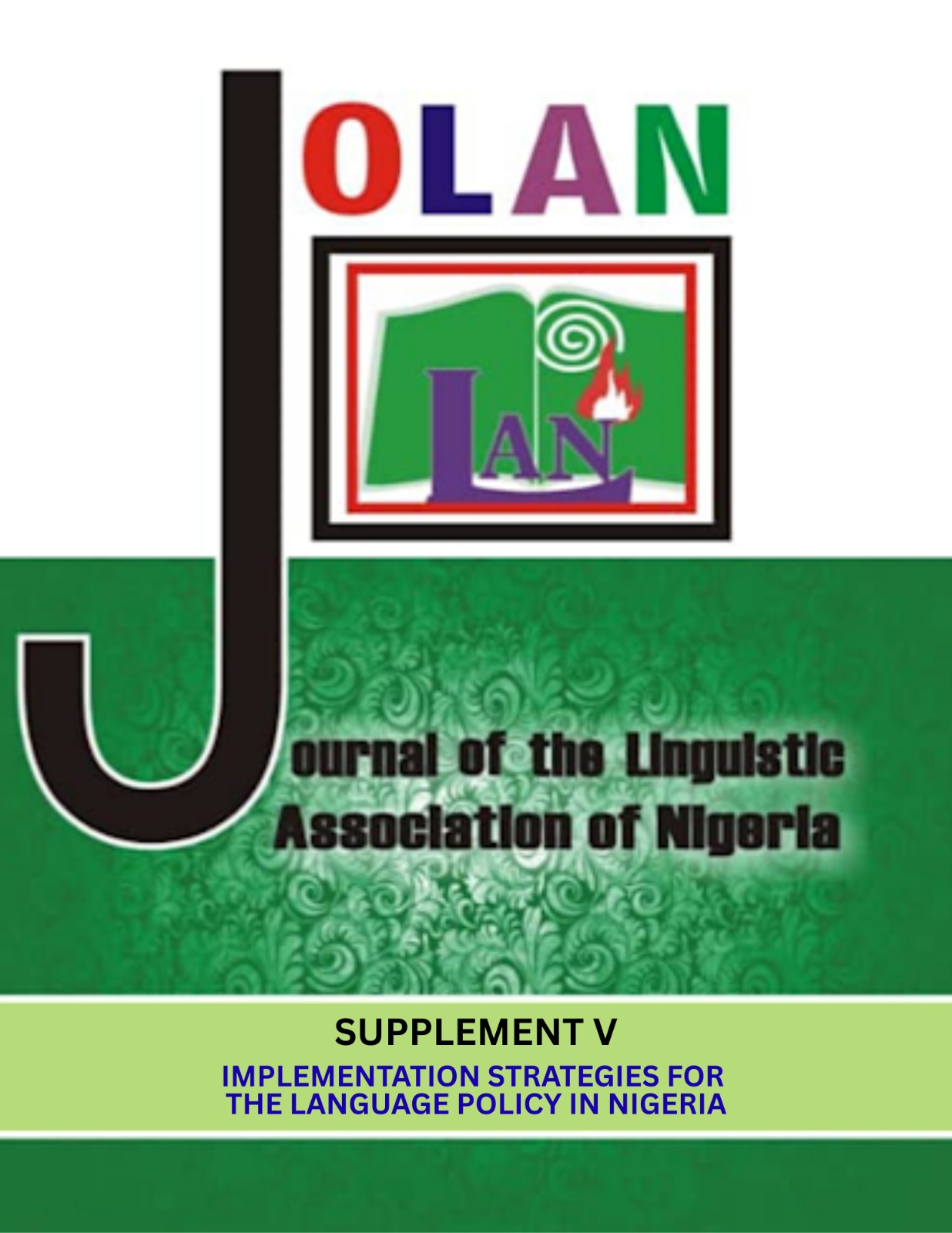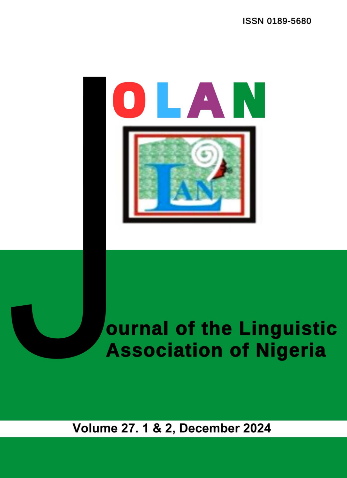Inflectional processes in Hausa verbs: Grade and reduplication
DOI:
https://doi.org/10.60787/jolan.vol5no1.424Keywords:
Hausa morphology, inflectional processes, verbal grade system, reduplication, morphosyntaxAbstract
This paper investigates inflectional morphology in Hausa with particular attention to the processes of grade and reduplication as they apply to verbs. It adopts Parsons (1960) for the description of grade and Yakasai (2014) for reduplication as inflectional mechanisms. Building on previous analyses of Hausa morphology, the study begins by outlining the distinction between inflection and derivation on phonological, morphological, syntactic, and semantic grounds. Using data from Hausa, the paper demonstrates how grade operates through predictable suffixal patterns defined by tone and final vowels, producing systematic verb classes with distinct morphosyntactic and semantic properties. Reduplication, by contrast, functions as both a full and partial process, encoding semantic values such as repetition, intensity, and distributive action. Examples are presented with standard interlinear glossing, illustrating how these processes preserve the word class of the base while enriching the verbal paradigm. The findings highlight the productivity and regularity of inflection in Hausa and its significance for understanding the interaction of tone, morphology, and syntax. More broadly, the study contributes to comparative morphological theory by providing insights into how an African language organizes verbal inflection through both highly structured and flexible processes.
References
Abubakar, A. 2001. An Introductory Hausa Morphology. Maiduguri: University of Maiduguri.
Adams, V. 1973. An Introduction to Modern English Word Formation. London: Longman.
Akmajian, A. et al. 2003. Linguistics: An Introduction to Language and Communication New Delhi, Indiana Prentice-Hall of India Private Limited.
Bauer, L. 1983. English Word-Formation. Cambridge: Cambridge University Press.
Bloomfield, L. 1933. Language. New York: Holt, Rinehart and Winston.
Cannon, G. 1986. ‘Blends in English Word Formation’, in Linguistics 24: 725–53.
Malkiel, Y. 1978. ‘Derivational Categories’, in J. Greenberg (ed.) Universals of Human Language, vol. 3, Word Structure, Stanford, CAA Stanford University Press.
Marchand, H. 1969. The Categories and Types of Present-Day English Word-Formation, 2nd edition. Munich: C.H. Beck.
Matthews, P. H. 1991. Morphology. Cambridge: Cambridge University Press.
Newman, P. 1973. Grades, Vowel-tone Classes and Extensions in the Hausa Verbal System. Studies in African Linguistics 4: 297-346.
Newman, P. 1989. Reduplication and Tone in Hausa Ideophones. Proceedings of the Berkeley Linguistics Society 15: 248-255.
Newman, P. 2000. The Hausa Language: An Encyclopedic Reference Grammar New Haven: Yale University Press.
Newman, P. and Newman, R. M. 1977. Modern Hausa-English Dictionary (Sabon Ƙamus na Hausa zuwa Turanci). Ibadan & Zariaa University Press.
Parsons, F. W. 1960. “The Verbal System in Hausa”, in Afrika und Ubersee 44:1-36.
Parsons, F.W. 1962. ‘Further Observations on the ‘Causative’ grade of the verb in Hausa’, in Journal of African Languages 1/3: 153-272.
Schuh, R. G. 2005. ‘A Hausa Story and Hausa Verb Morphology: Linguistic 105 Sample Paper’. Los Angeles: UCLA.
Yakasai, H. M. 2014. ‘Grammaticalisation Processes in Hausa Reduplication: A Morphological Productivity Approach’, in Musa A. (ed.) Bayero Journal of Linguistics vol. 1, No. 1 pp 151-170. Kanoo Bayero University Press.
Yusuf, M. A. .2011. Hausa Grammar: An Introduction. Zariaa Ahmadu Bello University Press Limited.
Downloads
Published
How to Cite
Issue
Section
License
Copyright (c) 2025 Journal of The Linguistic Association of Nigeria

This work is licensed under a Creative Commons Attribution-NonCommercial-ShareAlike 4.0 International License.














